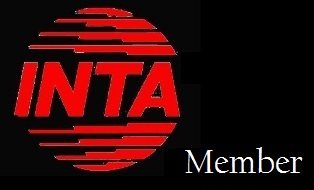- Activities & Services
- Patents
- Marks
- Plans & Models
- Domain names
- Patents
- Summary
- Required documents
- laws
- Marks
- Summary
- Required Documents
- laws
- Plans & models
- Summary
- Required documents
- laws
- Domain names
- Summary
- Required documents
- Counterfeit
- Technical translation

♦ Counterfeit :
Represents a counterfeit offense of the registered mark, any act causing harm to the exclusive rights of the mark carried by third parties in vioaltion of the owner rights of the mark. Facts prior to the publication of the mark registration can not be considered as having caused harm to the rights thereof. However, can be recorded and prosecuted, the facts posterior to the notification made to the presumed counterfeiter of a copy of the mark registration. All persons who have commited an offence of counterfeit is liable for 6 months to 2 years of imprisonment and a fine of 2,500,000 to 10,000,000 Algerian Dinars (DZD) or one of the following two penalties only with:
- Temporary or permanent closure of the establishment. - Seizure of the objects, instruments and tools used in the offence. - Destruction of the products constituting the offence Are punished with 1 month to 1 year of imprisonment and a fine of 500,000 to 2,000,000 Algerian Dinars (DZD) or one of the following two penalties only: 1 - Those who have not affixed any mark to their products or services or who knowingly sold or put up for sale vendu a product or offered a service without mark.
2 - Those who have affixed on their products or services a non registered or filed mark. In virtue of an order from the president of the court, the owner of a mark can proceed, with the possible assistance of an expert, to the detailed description, with or without seizure, of the products that they claim marked to their prejudice.
The order is retained on simple request and on justification of the mark registration. When seizure is requested, the judge can request a bail bond from the claimant. If the claimant did not obtain, either by the civil way or the legal way within one month, the description, the seizure is void by full right, without prejudice to the damage and interests which can be claimed.
♦ LITIGATIONS :
Who can engage the action in counterfeit? - The owner of a registration application when they have notified their application to the presumed counterfeiter, - The owner of the registered mark, - The transferee, if the act of transfer has been recorded in the Special Register of Marks, - The exclusive licencee, if the owner is to act upong legal notice does not do anything. When to act?
To be eligible to engage a legal action in mark counterfeit, it is necessary that the right of the owner is opposable to third parties, the mark therefore must have been registered and publshed, or notified to the counterfeiter.
The transfer or grant of licence must be recorded in the Special Register of Marks.
The legislation does not anticipate a debarment period for an action against a non filed conterfeiting mark.
With regards to the action in counterfeit against a mark subsequently registered, the debarment period for the action is 5 years starting from the filing date, unless this latter was requested in bad faith.
Procedure for an action in counterfeit Preliminary measures: - Evaluation of the chances of success of the legal action, - Research at the INAPI to identify the possible rights that could be held by the presumed counterfeiter, - Possible research at the CNRC to get the contact details of the counterfeiter, - Legal notice to the counterfeiter by recorded mail or by bailif appointment, - Depending on the case, discussion with the counterfeiter in view of an amicable arrangement or introduction of a legal action Three types of legal actions are possible: A) Legal action upon complaint with constitution of a civil party initiated by the owner of the counterfeited mark.
This action is anticipated in the decree of 15 July 2002 showing the modalities of application of Article 22 of the Code of Customs related to the import of counterfeit merchandise.
It is directed by the Instructor Magistrate and has a rather short duration due to the fact that the merchandise is blocked by Customs.
It generally ends up by the conviction of the charged (counterfeiter) to severe fines and the destruction of the merchandise.
The damages interests given to the civil party are however very often minimal.
See decree of 15 July 2002 modalities of this action B) Legal action upon complaint initiated by the owner of the mark following observation on the market of products counterfeiting their mark. This action is described in the Order of 19 July 2003 related to marks.
The procedure is the same as the abovementioned in A) except the duration is a lot longer. C) The civil action which we prefer to the legal action mentioned in B) is initiated and directed by the holder of the rights in collaboration with our Legal Service.
It is also mentioned in the Order of 19 July 2003 which details all the procedure.
Its duration is rather short and and ends quite often to the conviction of the counterfeiter to pay quite substantial damages interests to the claimant and the desctruction of the merchandise or stocks of packaging carrying the counterfeited mark.
|



